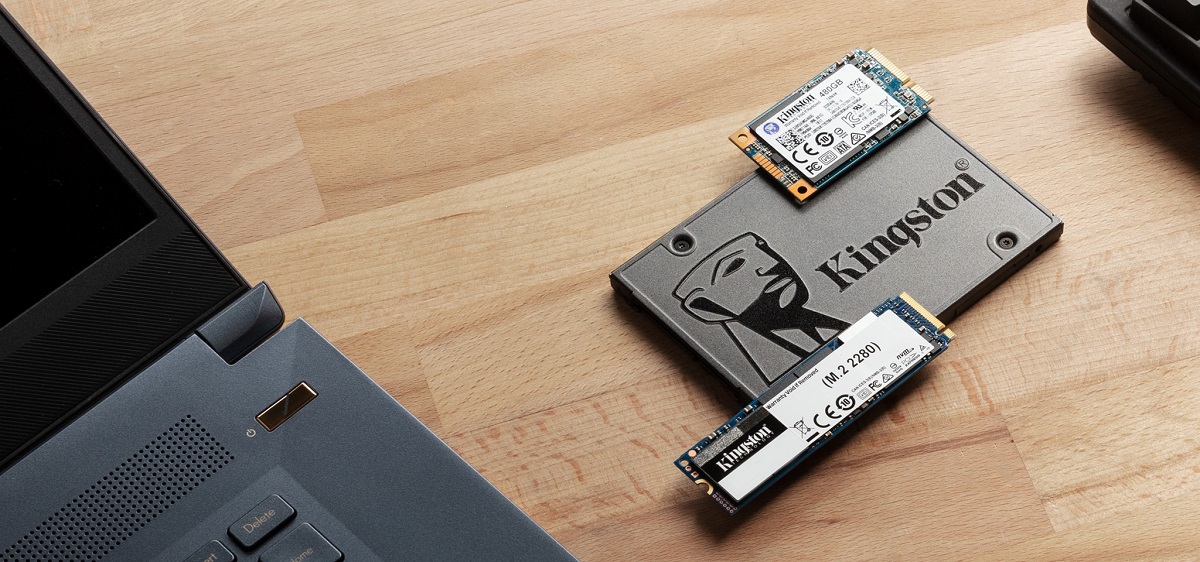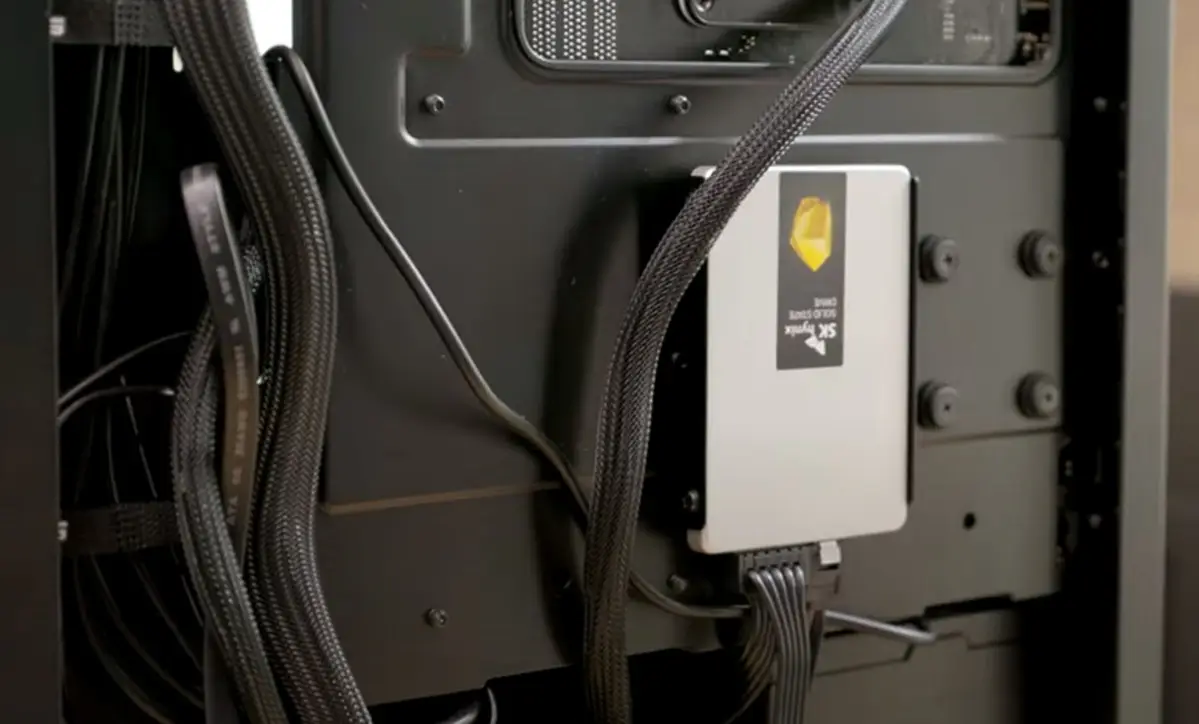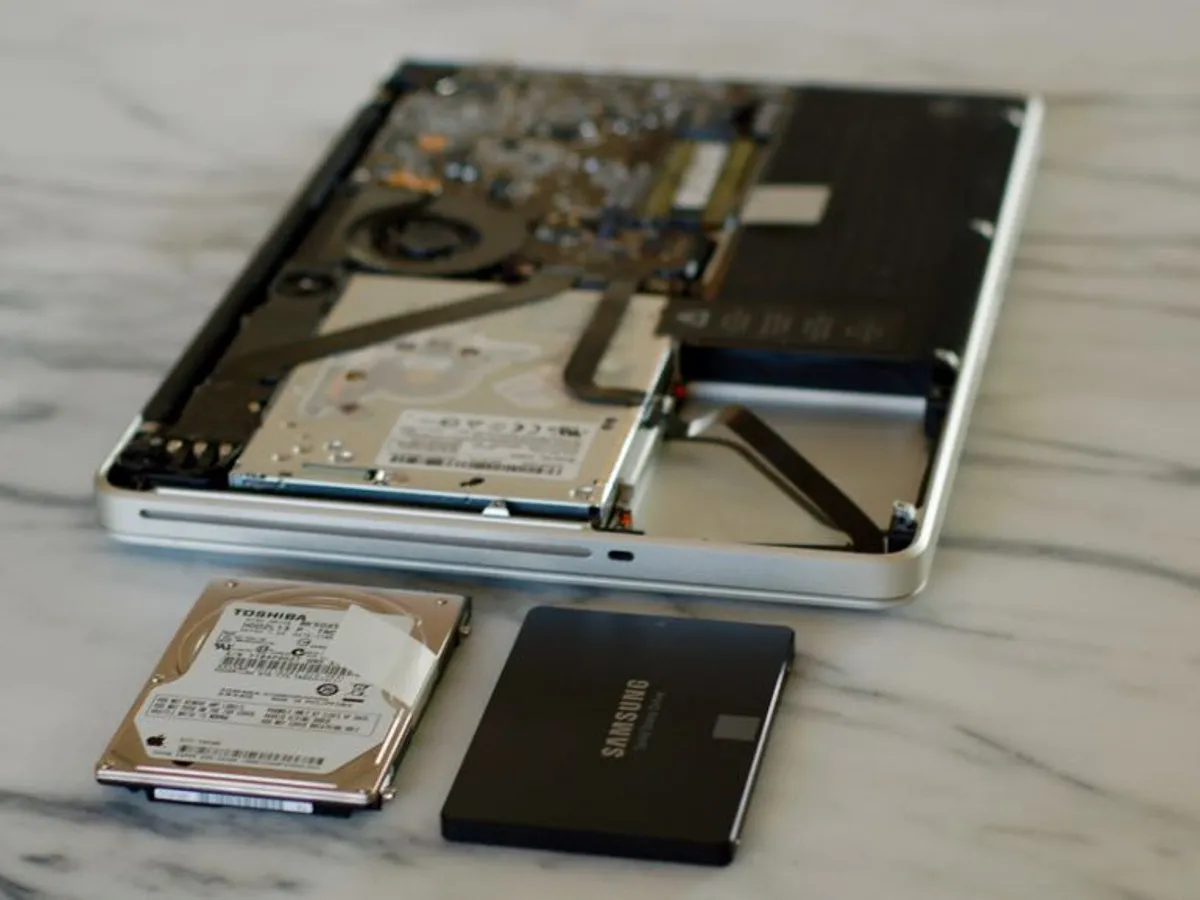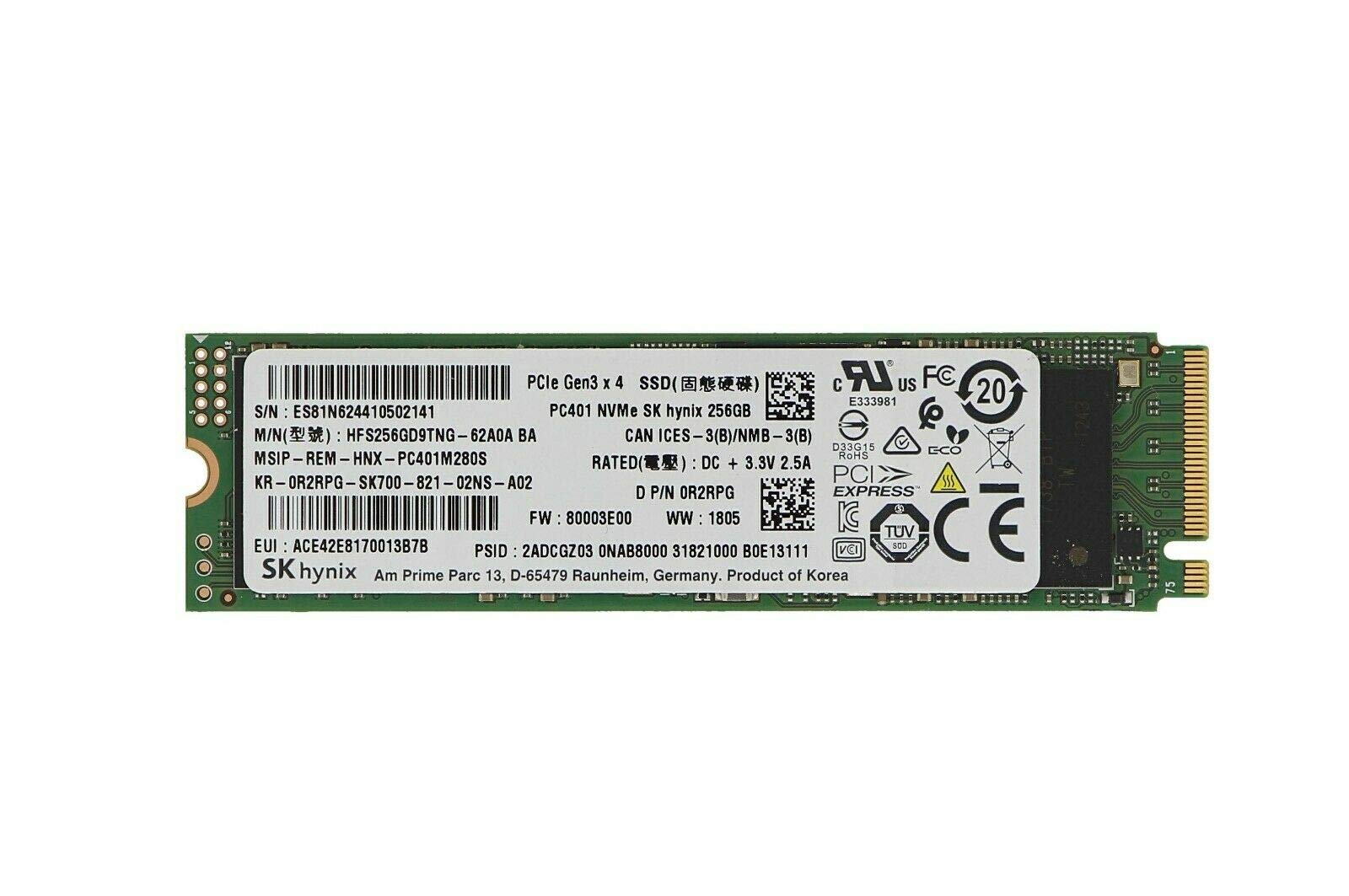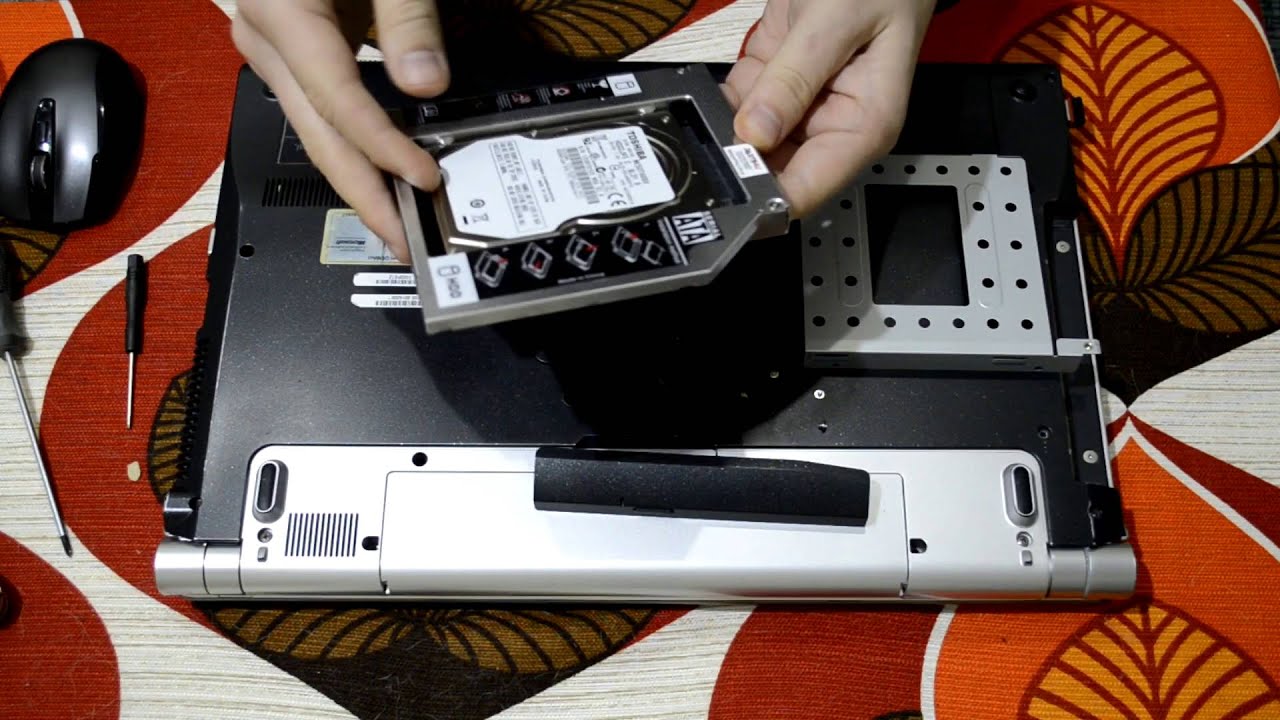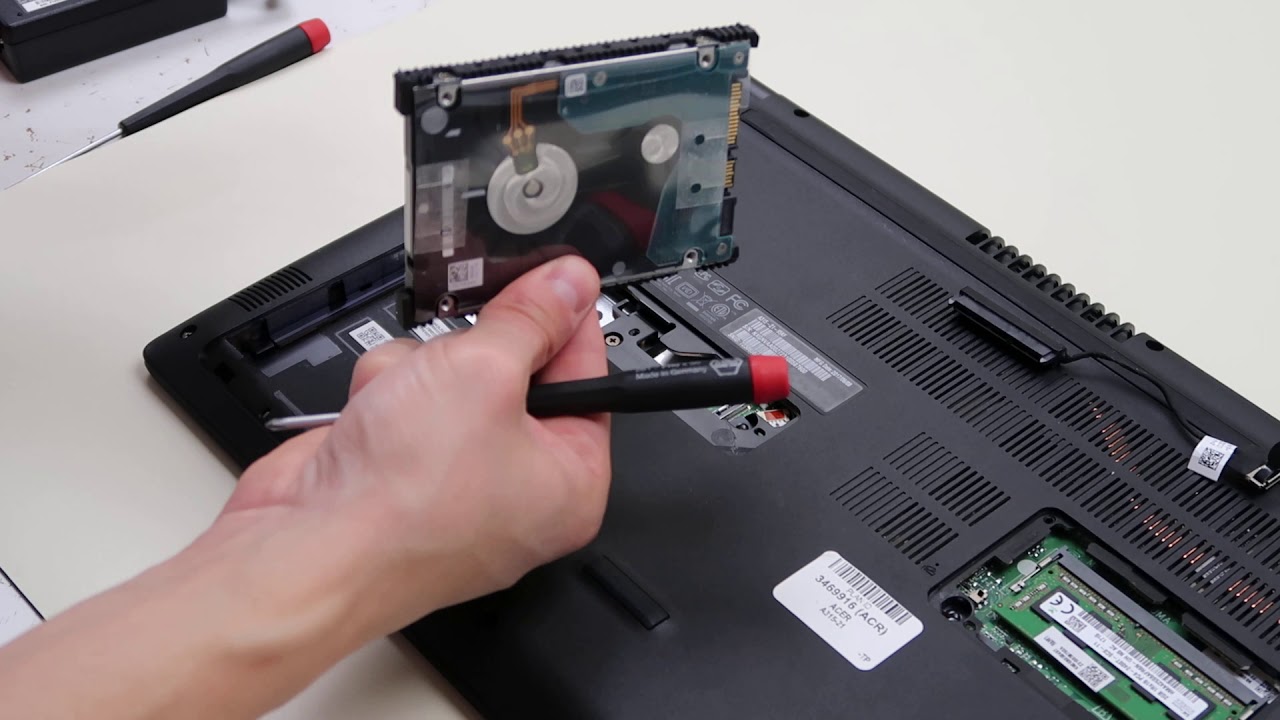Introduction
Welcome to the world of solid state drives (SSDs), the modern storage technology that has revolutionized the way we store and access data. As technology continues to advance, traditional hard disk drives are being overshadowed by the incredible speed and efficiency of solid state drives. In this article, we will delve into the inner workings of solid state drives and explore how they differ from conventional hard disk drives.
Unlike their mechanical counterparts, solid state drives utilize a technology called NAND flash memory to store and retrieve data. This not only allows for faster read and write speeds, but also provides a higher level of reliability and durability. With no moving parts, solid state drives are more resistant to physical damage, making them an ideal choice for laptops, desktops, and even servers.
In order to fully understand how solid state drives work, it is crucial to familiarize ourselves with the various components that make up these storage devices. From the NAND flash memory to the controller and interfaces, each component plays a vital role in the overall performance and functionality of the solid state drive.
Throughout this article, we will explore in detail the inner workings of solid state drives, analyzing the process of data storage, reading, and writing. We will also examine the advantages that solid state drives offer over traditional hard disk drives, such as faster boot times, improved energy efficiency, and enhanced durability.
However, it is important to note that solid state drives are not without limitations. While they excel in many aspects, they also have certain drawbacks, such as limited write endurance and higher cost per gigabyte compared to hard disk drives. By examining both the advantages and limitations, we can gain a comprehensive understanding of solid state drives and make informed decisions when it comes to choosing the right storage solution.
So, if you are curious about the inner workings of solid state drives and want to unleash the full potential of your storage devices, join us on this journey as we explore the fascinating world of solid state drives and discover the technology that is changing the way we store and access our data.
What is a Solid State Drive?
A solid state drive (SSD) is a storage device that uses integrated circuit assemblies to store data, similar to how a USB flash drive functions. Unlike traditional hard disk drives (HDDs), which use spinning disks and mechanical read/write heads, solid state drives utilize a technology called NAND flash memory.
NAND flash memory is a type of non-volatile memory that retains data even when the power is turned off. This makes solid state drives more reliable and efficient compared to hard disk drives, as there are no moving parts that are susceptible to wear and tear.
One of the most significant advantages of solid state drives is their incredible speed. With no mechanical components, solid state drives can access and transfer data at lightning-fast speeds. This results in faster boot times, quicker application launches, and significantly reduced file transfer times.
Another important difference between solid state drives and hard disk drives is the form factor. Solid state drives are generally smaller and lighter, making them ideal for laptops and other portable devices. Additionally, they do not produce noise or vibrations, which further contributes to their suitability for mobile computing.
Furthermore, solid state drives are renowned for their durability and reliability. They can withstand shocks and vibrations better than traditional hard disk drives, making them more resistant to physical damage. With no moving parts, the risk of mechanical failure is greatly reduced, leading to increased longevity and reduced data loss.
As technology continues to advance, solid state drives are becoming more affordable and accessible. While they may still be more expensive than traditional hard disk drives on a per-gigabyte basis, the cost difference has significantly narrowed over the years, making solid state drives a viable and worthwhile investment for many individuals and businesses.
In summary, a solid state drive is a storage device that utilizes NAND flash memory to store data. It offers numerous advantages over traditional hard disk drives, including faster speeds, smaller form factors, improved durability, and reduced noise. As solid state drives continue to evolve and improve, they are becoming the preferred choice for users who prioritize speed, reliability, and efficiency in their storage solutions.
Components of a Solid State Drive
A solid state drive (SSD) is composed of several key components that work together to store, retrieve, and manage data. Understanding the different components of an SSD is essential to grasp how this advanced storage technology operates. Let’s explore the primary components that make up a solid state drive:
- NAND Flash Memory: The NAND flash memory is the heart of a solid state drive. It is a type of non-volatile memory that employs a grid of memory cells to store data. These cells are divided into pages, which are further grouped into blocks. NAND flash memory is responsible for storing and retrieving data in an SSD. It has a significantly faster read and write speed compared to traditional hard disk drives.
- Controller: The controller is a crucial component that manages the data flow between the NAND flash memory and the host system. It coordinates various operations, including reading, writing, and erasing data. The controller also enhances the overall performance and reliability of the solid state drive by using advanced algorithms and error correction mechanisms.
- Power Supply: Solid state drives require a stable power supply to function effectively. They typically have built-in power management systems that regulate voltage and ensure a consistent power supply to the drive. This helps prevent data corruption and maintains the integrity of stored information, even during power fluctuations or sudden power loss.
- Interfaces: Solid state drives utilize various interfaces to connect with the host system and facilitate data transfer. The most common interfaces for SSDs are SATA (Serial ATA), which is widely used in consumer-grade drives, and NVMe (Non-Volatile Memory Express), a high-speed interface designed for faster storage performance. Interfaces provide the necessary communication channels for data exchange between the solid state drive and other components in the system.
These components work together seamlessly to deliver the exceptional performance and reliability that solid state drives are known for. Each component plays a crucial role in ensuring smooth data operations, efficient power management, and secure data storage.
By understanding the components of a solid state drive, users can make informed decisions when selecting an SSD that meets their specific needs. Whether it is for personal use or in professional settings, solid state drives offer significant advantages over traditional hard disk drives, making them an ideal choice for those seeking faster data access, improved system responsiveness, and enhanced durability.
NAND Flash Memory
NAND flash memory is a crucial component of solid state drives (SSDs) and is responsible for storing and retrieving data in these advanced storage devices. As a type of non-volatile memory, NAND flash enables data retention even when power is removed, making it ideal for SSDs. Let’s explore the key features and functionality of NAND flash memory:
Structure: The structure of NAND flash memory consists of a grid of memory cells, which are organized into pages and blocks. Each memory cell represents a single bit, typically either a 0 or a 1. The pages in NAND flash memory are usually small, ranging from 4KB to 16KB, while blocks are larger, typically around 128KB to 256KB.
Operation: Reading and writing data in NAND flash memory involve different operations. To read data, an electrical charge is sent to the memory cell, and the resulting voltage is measured. If the voltage is above a certain threshold, it is interpreted as a logic 1, and if it falls below the threshold, it is interpreted as a logic 0. Writing data is a more complex process that involves erasing a block before it can be written. The erase operation clears the existing content of the block and prepares it for new data to be written.
Types of NAND Flash: NAND flash memory comes in different types, including SLC (Single-Level Cell), MLC (Multi-Level Cell), and TLC (Triple-Level Cell). SLC NAND stores a single bit per cell, providing the highest level of reliability and endurance but at a higher cost. MLC NAND stores two bits per cell, and TLC NAND stores three bits per cell, allowing for higher capacity at a lower cost but with slightly reduced performance and endurance.
Wear Leveling: One of the challenges with NAND flash memory is that it has limited write endurance, meaning each memory cell can only withstand a certain number of write cycles before it becomes unreliable. To mitigate this issue, SSDs employ a technique called wear leveling. Wear leveling ensures that data is evenly distributed across the memory cells, preventing any single cell from wearing out faster than others. This extends the overall lifespan and reliability of the solid state drive.
Error Correction: NAND flash memory is susceptible to errors, such as bit flips or read disturbances. To address this, SSDs incorporate error correction mechanisms, such as ECC (Error Correction Code). ECC algorithms detect and correct errors in stored data, ensuring data integrity and reliability.
NAND flash memory is a critical component in the functioning of solid state drives. Its unique characteristics, including its non-volatile nature, fast read and write speeds, and wear leveling techniques, make it an ideal choice for high-performance storage devices. As technology advances, the density and capacity of NAND flash continue to increase, driving the development of larger and more efficient solid state drives to meet the growing demands of data storage.
Controller
The controller is a vital component in a solid state drive (SSD) and serves as the brain of the storage device. It is responsible for managing and controlling various operations, including data access, error correction, and wear leveling. The controller plays a crucial role in optimizing the performance, reliability, and overall functionality of the SSD. Let’s explore the key functions and features of an SSD controller:
Data Management: The SSD controller is responsible for managing data flow between the host system and the NAND flash memory. It handles tasks such as reading data from the memory for retrieval or writing data to allocate storage space. The controller also ensures the smooth execution of other operations, such as garbage collection, data compaction, and wear leveling. Through its advanced algorithms, the controller maximizes the efficiency and lifespan of the SSD.
Error Correction: Solid state drives are prone to errors that can occur during the reading or writing process. The controller implements advanced error correction algorithms, such as Error Correction Code (ECC), to detect and correct errors in the stored data. ECC helps maintain the integrity and reliability of the stored information, ensuring that it remains accurate and consistent over time.
Wear Leveling: NAND flash memory has limited write endurance, meaning that individual memory cells can only handle a certain number of write cycles. The controller implements wear leveling techniques to distribute data evenly across the memory cells, preventing any single cell from wearing out faster than others. By spreading the write operations across the NAND flash, wear leveling extends the overall lifespan of the SSD.
Caching: To improve the performance of the solid state drive, the controller often incorporates a caching mechanism. The cache is a small portion of fast-access memory that stores frequently accessed data, allowing for quicker retrieval. By caching frequently used data, the controller can reduce the response times and provide faster access to frequently accessed files and applications.
Host Interface: The controller facilitates communication between the SSD and the host system through various interfaces, such as SATA (Serial ATA) or NVMe (Non-Volatile Memory Express). These interfaces provide the necessary data transfer protocols and commands to enable seamless data exchange between the SSD and the host system.
The controller’s effectiveness and efficiency directly impact the overall performance and reliability of the solid state drive. Manufacturers continuously work on developing more sophisticated controllers, integrating cutting-edge technologies and algorithms to enhance data management, error correction, and overall SSD performance. These advancements ensure that SSDs continue to offer faster speeds, longer lifespans, and improved data integrity for various applications, ranging from consumer electronics to enterprise storage systems.
Power Supply
The power supply is an essential component of a solid state drive (SSD) that ensures the proper functioning and integrity of the stored data. A stable and consistent power supply is crucial for the reliability and durability of the SSD. Let’s explore the importance and role of the power supply in an SSD:
Power Management: Solid state drives have built-in power management systems that regulate voltage and ensure a consistent power supply to the drive. These systems play a critical role in managing power consumption and optimizing energy efficiency. By intelligently adjusting power levels based on usage patterns, the power management system enhances the overall performance of the solid state drive and prolongs the battery life in mobile devices.
Data Integrity: Power disruptions, fluctuations, or sudden power loss can lead to data corruption or loss in traditional storage devices. However, solid state drives are designed with mechanisms to protect against such issues. The power supply in an SSD ensures that the drive has sufficient power to complete ongoing operations and safely store critical data. Additionally, SSDs employ advanced error correction mechanisms, such as Error Correction Code (ECC), to detect and correct errors that may occur due to power-related issues.
Transient Protection: SSDs incorporate transient protection mechanisms to safeguard against voltage spikes and other electrical disturbances. These protections help shield the drive from potential damage caused by power surges or unstable power supply conditions, ensuring the longevity and reliability of the SSD.
Fast Startup and Resume: With a stable power supply, solid state drives can achieve faster startup and resume times. Unlike traditional hard disk drives that require time for the spinning disks to reach operational speed, SSDs have instant access to the stored data. This leads to significantly reduced boot times, allowing users to quickly start their systems and resume their work without delay.
Protection Against Data Loss: Solid state drives employ various mechanisms, such as onboard capacitors and advanced power-loss protection circuits, to safeguard against data loss during an unexpected power interruption. These features provide temporary power to the SSD, allowing it to complete ongoing write operations and protect the integrity of stored data, even in the event of a power failure.
The power supply plays a crucial role in the overall performance and reliability of a solid state drive. By ensuring a stable and consistent power supply, SSDs can deliver fast and reliable data access while protecting against data loss or corruption. Whether in desktop computers, laptops, or enterprise storage systems, a reliable power supply is essential for optimizing the performance and longevity of solid state drives.
Interfaces
The interface is a critical component of a solid state drive (SSD) that enables communication between the drive and the host system. It plays a vital role in determining the speed, compatibility, and overall performance of the SSD. Let’s explore the different interfaces commonly used in solid state drives:
SATA (Serial ATA): SATA is a widely used interface in consumer-grade SSDs and has been the standard for many years. It provides a reliable and cost-effective data transfer solution. SATA interfaces come in various generations, with SATA III (6.0 Gbps) being the most prevalent. While SATA III offers improved performance compared to previous generations, it has limitations in terms of data transfer rates and overall speed, which may not fully exploit the potential of modern SSDs.
NVMe (Non-Volatile Memory Express): NVMe is an advanced interface specifically designed for solid state drives and is capable of unleashing their full potential. NVMe utilizes the PCIe (Peripheral Component Interconnect Express) protocol, which offers significantly higher data transfer rates and lower latency compared to SATA. With NVMe, SSDs can achieve blazing-fast read and write speeds, providing exceptional performance for tasks that require high bandwidth, such as gaming, media editing, and data-intensive applications.
PCIe (Peripheral Component Interconnect Express): PCIe is a high-speed serial interface commonly used for graphics cards, network cards, and storage devices. It provides a direct connection between the SSD and the system’s PCIe bus, offering a faster data transfer rate compared to SATA. PCIe-based SSDs can take advantage of the full bandwidth available, delivering outstanding performance and responsiveness in various computing environments.
USB (Universal Serial Bus): While USB interfaces are more commonly associated with external storage devices, some SSDs utilize USB connections for easy portability and compatibility. USB 3.0 and USB 3.1 Gen 2 interfaces provide faster data transfer rates and improved performance for external SSDs, making them suitable for on-the-go use or as additional storage options.
eSATA (External Serial ATA): eSATA is an external interface designed specifically for storage devices. Similar to SATA, it offers a straightforward and cost-effective solution for connecting external SSDs to a host system. eSATA interfaces provide higher data transfer rates than USB interfaces, allowing for faster data access and backup operations.
The choice of interface depends on the specific requirements and use cases of the SSD. NVMe interfaces are ideal for demanding applications that prioritize speed and performance, while SATA and USB interfaces offer more versatility and compatibility for general use. It is important to ensure compatibility between the SSD interface and the host system to achieve optimal performance and functionality.
As technology progresses, advancements in interface technologies continue to push the boundaries of solid state drive performance. Newer versions and variants of existing interfaces are constantly being developed to meet the increasing demands of the storage industry, offering faster data transfer rates, lower latency, and improved overall performance.
How Does a Solid State Drive Store Data?
A solid state drive (SSD) stores data using a technology called NAND flash memory. Unlike traditional hard disk drives (HDDs) that use spinning disks and mechanical read/write heads, SSDs utilize a more advanced and efficient method for data storage. Let’s explore the process of how a solid state drive stores data:
NAND Flash Memory: The primary storage component in an SSD is the NAND flash memory. It is a non-volatile memory technology that retains data even when the power is turned off. NAND flash memory is organized into cells, with each cell capable of storing multiple bits of data. This allows for high-density data storage in a compact form factor.
Pages and Blocks: NAND flash memory is organized into pages and blocks. A page is the smallest unit of data that can be read or written and typically ranges from 4KB to 16KB in size. Multiple pages are grouped together into blocks, which are typically larger, ranging from 128KB to 256KB in size. Blocks are used for erasing and rewriting data.
Writing Data: When data needs to be stored in an SSD, the controller sends a command to the NAND flash memory to write the data. The SSD divides the data into chunks and writes them into empty or previously erased pages. The data is stored by modifying the electrical charge levels in the memory cells. Changing the charge level represents the binary values of 0 or 1, allowing for data storage in digital form.
Reading Data: When data needs to be retrieved from an SSD, the controller sends a command to the NAND flash memory to read the data. The SSD reads the electrical charge levels in the memory cells, and based on these charge levels, it determines the stored binary values. The data is then passed back to the controller, which further processes and delivers it to the host system.
Erase and Rewrite Operations: Unlike HDDs, which can overwrite data on individual sectors, SSDs require a separate erase operation before data can be rewritten. To rewrite data, the SSD must first erase the entire block containing the data to be updated or deleted. The erased block is then prepared to receive new data through the write operation. This process, known as garbage collection, helps maintain the efficiency and longevity of the SSD by preventing excessive wear on individual memory cells.
Controller Management: The controller in the SSD plays a crucial role in managing the storage and retrieval of data. It handles tasks such as wear leveling, where data is evenly distributed across the memory cells to prolong their lifespan. The controller also manages error correction, data encryption, and various other operations to ensure the integrity and security of the stored data.
Overall, the process of how a solid state drive stores data involves writing data to NAND flash memory by changing charge levels in memory cells and subsequently reading the stored data when requested. The combination of advanced NAND flash memory technology and intelligent controller management allows SSDs to provide faster data access, enhanced reliability, and increased durability compared to traditional hard disk drives.
Reading and Writing Data in a Solid State Drive
A solid state drive (SSD) utilizes advanced technology to read and write data at incredible speeds. Unlike traditional hard disk drives (HDDs) with mechanical components, SSDs have no moving parts, allowing for faster and more efficient data access. Let’s dive into the process of reading and writing data in a solid state drive:
Reading Data: When a request is made to read data from an SSD, the controller receives the command and communicates with the NAND flash memory. The controller determines the location of the requested data and sends electrical signals to the specific memory cells holding that data. The memory cells release the stored charge levels, and the controller interprets these charge levels as binary values, ultimately reconstructing the original data. The data is then sent to the host system for further processing.
Writing Data: When new data needs to be written to an SSD, the controller manages the process by dividing the data into smaller chunks. First, the controller identifies the empty or previously erased pages in the NAND flash memory. Then, it programs the memory cells with new charge levels to represent the binary data. This process involves applying precise voltages to the cells to modify their electrical charge, ensuring a reliable, accurate, and secure storage of the data.
Erase Operations: Before data can be written to a memory cell in an SSD, the entire block containing that cell must be erased. This is because SSDs cannot overwrite data on a granular level like HDDs. To erase a block, the controller sends a command to the NAND flash memory, which sets all the memory cells in that block to an erased state, ready to be rewritten. The erase operation is an essential part of SSD management and is typically performed during periods of low activity to minimize impact on performance.
Wear Leveling: To ensure balanced distribution of write operations across the memory cells, SSDs employ a technique called wear leveling. Wear leveling prevents specific cells from experiencing excessive wear due to frequent writes. By spreading out the write operations across different cells, wear leveling prolongs the lifespan of the SSD and maintains a consistent level of performance over time.
Trim Command: The SSD controller supports a feature called Trim command, which enhances performance by informing the drive about unused or deleted data. When data is deleted or no longer needed, the Trim command allows the SSD to mark those blocks as available for future write operations. This process improves the efficiency of write operations by reducing the need for erase operations when overwriting data.
Through efficient data management and utilization of advanced NAND flash memory, solid state drives provide significantly faster read and write speeds compared to traditional hard disk drives. This enhanced performance translates into quicker system boot times, faster application launches, and seamless data transfer. The absence of moving parts in SSDs also results in reduced noise and improved reliability, making them an ideal choice for both personal and enterprise storage solutions.
Advantages of Solid State Drives
Solid state drives (SSDs) offer numerous advantages over traditional hard disk drives (HDDs), making them increasingly popular in the world of storage technology. Let’s explore the key advantages that SSDs bring to the table:
Speed and Performance: SSDs are significantly faster than HDDs when it comes to data access and transfer speeds. With no moving parts, SSDs can provide near-instantaneous access to stored data, resulting in faster system boot times, quicker application launches, and rapid file transfers. This enhanced speed boosts overall system performance, allowing for improved productivity and reduced waiting times.
Reliability and Durability: Since SSDs have no mechanical components, they are more resistant to physical shock and damage compared to HDDs. This improved durability makes SSDs highly suitable for portable devices, as they can withstand vibrations, drops, and other physical impacts. Additionally, SSDs are less susceptible to data loss due to mechanical failures, making them a more reliable choice for storing valuable data.
Energy Efficiency: SSDs consume significantly less power than HDDs. Since there are no spinning disks to rotate or read/write heads to move, SSDs require less energy to operate. This energy efficiency translates into longer battery life for laptops and other portable devices, while also reducing the overall power consumption of desktop systems. By choosing SSDs, users can enjoy longer usage times and reduced electricity costs.
Noise Reduction: The lack of moving parts in SSDs eliminates the noise that is typically associated with HDDs. HDDs generate noise from the spinning disks, motor, and read/write heads, while SSDs are virtually silent during operation. This absence of noise contributes to a quieter and more peaceful working environment, especially for individuals who value a noise-free workspace or those using SSD-equipped laptops.
Compact Form Factor: SSDs are generally smaller and lighter than HDDs, making them ideal for slim laptops, ultrabooks, and compact systems. The smaller form factor of SSDs allows for more flexibility in design and enables manufacturers to create sleeker and more portable devices. Additionally, the reduced weight contributes to enhanced portability and ease of handling for mobile users.
Improved Data Security: SSDs provide improved data security features compared to HDDs. Many SSDs offer hardware-based encryption, ensuring that the stored data is protected from unauthorized access even if the drive is physically removed from the system. This feature is particularly valuable for individuals and businesses concerned about data privacy and confidentiality.
Low Failure Rate: With no moving parts, SSDs have a lower failure rate compared to HDDs. Traditional hard disk drives are more susceptible to mechanical failures due to wear and tear, such as disk crashes or read/write head failures. SSDs, on the other hand, are less prone to such issues, resulting in a higher level of long-term reliability and reduced risk of data loss.
In summary, solid state drives offer a range of advantages over traditional hard disk drives, including faster speeds, improved reliability, enhanced energy efficiency, reduced noise, compact form factor, enhanced data security, and a lower failure rate. These benefits have made SSDs the preferred choice for many users and industries, from everyday consumers seeking improved performance to enterprise professionals requiring high-speed and reliable storage solutions.
Limitations of Solid State Drives
While solid state drives (SSDs) offer numerous advantages over traditional hard disk drives (HDDs), they also have some limitations to consider. Understanding these limitations can help users make informed decisions when choosing storage solutions. Let’s explore some of the key limitations of SSDs:
Limited Write Endurance: Each memory cell in an SSD can only endure a finite number of write cycles before it becomes unreliable. While modern SSDs have significantly improved in this aspect compared to earlier generations, write endurance remains a consideration. With continuous and intensive write operations, particularly in high-demand enterprise environments, certain cells may wear out faster, potentially leading to data loss or reduced lifespan. However, wear leveling techniques implemented in SSD controllers help distribute write operations evenly across cells to mitigate this limitation.
Higher Cost per Gigabyte: SSDs generally have a higher cost per gigabyte compared to HDDs. Although prices have decreased over time, SSDs still tend to be more expensive, especially for higher capacities. This cost factor may limit the affordability of large-capacity SSDs for certain users, making them less accessible for those with extensive storage needs or budget constraints.
Capacity Limitations: While SSD capacities have significantly increased, they still have limitations compared to HDDs. HDDs can offer terabytes of storage at a more affordable price per gigabyte. SSDs with larger capacities, such as multi-terabyte drives, are available but at higher costs. This limitation may affect users who require extensive storage for media libraries, large databases, or other data-intensive applications.
Performance Degradation with Use: Over time, the performance of SSDs may degrade, especially when dealing with heavily fragmented or nearly full drives. As more data is written and deleted, the SSD’s performance in terms of write and erase operations may decrease. This degradation is largely due to the way SSDs handle data management, including garbage collection and wear leveling. However, periodic TRIM operations and regular optimization techniques can help mitigate this performance degradation.
Vulnerability to Power Loss: SSDs may be more vulnerable to data loss in the event of a sudden power loss. In situations where data has not been fully written or data buffers have not been flushed to the NAND flash memory, there is a risk of data corruption or loss. Although SSDs include features like power loss protection and advanced error correction to mitigate this issue, it is still a potential concern, especially in critical systems without adequate power backup or UPS (Uninterruptible Power Supply).
Compatibility and Long-term Obsolescence: As technology evolves, older generation SSDs may become incompatible with newer systems or interfaces. This means that users may need to upgrade their SSDs, potentially incurring extra costs or inconvenience when migrating data and replacing hardware. Additionally, as newer storage technologies emerge, SSDs may eventually become obsolete, thereby limiting their long-term usefulness.
While SSDs offer many benefits, it is important to consider these limitations when selecting storage solutions. The evolving nature of technology means that SSDs continue to improve, addressing many of these limitations over time. By weighing the advantages and limitations, users can make informed decisions, striking the right balance between performance, reliability, cost, and data storage requirements.
Conclusion
Solid state drives (SSDs) have transformed the landscape of data storage, offering numerous advantages over traditional hard disk drives (HDDs). With their faster speeds, improved reliability, energy efficiency, and compact form factors, SSDs have become the preferred choice for many individuals and businesses. The advanced technology of NAND flash memory and intelligent controller management has enhanced data access, security, and overall system performance.
While SSDs excel in many areas, it is important to acknowledge their limitations. Factors such as limited write endurance, higher cost per gigabyte, capacity limitations, performance degradation over time, vulnerability to power loss, and potential compatibility issues should be considered when selecting SSDs as storage solutions.
Despite these limitations, SSDs continue to evolve and improve. Ongoing advancements in technology are addressing areas of concern, including increased write endurance, reduced cost per gigabyte, higher capacities, and improved power loss protection. As the demand for faster and more efficient storage solutions grows, SSDs are poised to become even more affordable and accessible in the future.
Ultimately, the decision to choose an SSD or HDD depends on a variety of factors, including budget, capacity needs, performance requirements, and data security considerations. SSDs are especially well-suited for those who prioritize speed, reliability, and durability in their storage solutions, whether for personal use or in enterprise settings.
As technology continues to advance, it is essential to stay informed about the latest developments in the realm of storage technology. Whether it involves the use of SSDs, emerging technologies like NVMe and PCIe, or future innovations, understanding the benefits and limitations of different storage options empowers users to make informed decisions and optimize their computing experiences.
In conclusion, solid state drives have revolutionized data storage with their superior performance, reliability, and energy efficiency. While they have some limitations, SSDs continue to evolve and offer significant advantages over traditional hard disk drives. By carefully evaluating storage needs, considering the benefits and limitations, and staying informed about emerging technologies, users can make informed choices and unlock the full potential of their storage solutions.







